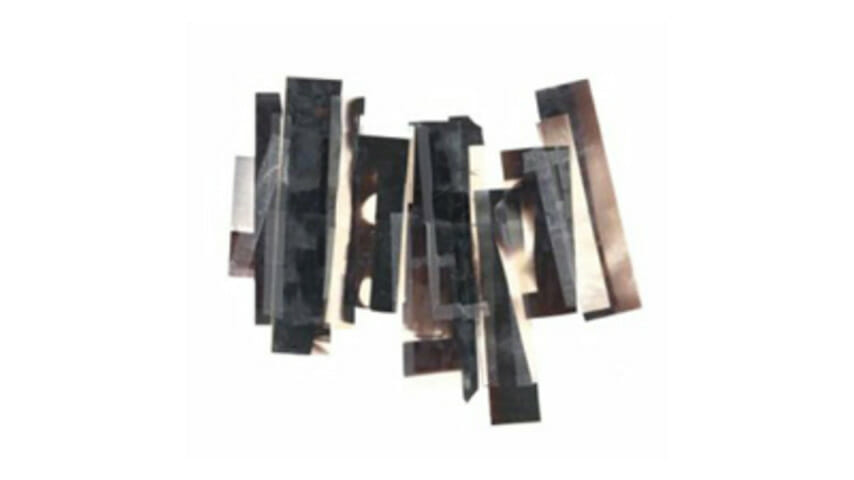The Mountain Goats – We Shall All Be Healed

The Mountain Goats’ approach has changed very little since 1995. That’s to say, singer-songwriter John Darnielle’s approach has changed very little. In 12 releases—three 12-inches, three singles compilations, an EP, and five full-length albums—the songs have remained doggedly simple. The voice is still nasal, the lyrics sardonically humorous, and the accompaniment still basically four-chord, guitar-strummed pop with sampled voices and noises. Overall the band’s style still sounds like a four-track demo, hastily recorded, giving the ever-important impression of having been discovered by you alone, somewhere in the back of a used cassette bin at a college-town record store.
The new album fits neatly in the catalog, building ever so slightly on the achievement of Tallahassee (2001). It’s not quite as polished; Tallahassee marked a sharp departure from the lo-fi idealism of previous Mountain Goats music, and We Shall All Be Healed, especially in songs like “Quito” and “Home Again Garden Grove,” takes a step backward toward the hissing melancholy of Coroner’s Gambit (1999). But Darnielle and company seem to have learned it’s okay to pluck strings instead of simply strumming them, to embellish with other instruments. The hammered dulcimer on “Slow West Vultures” is gorgeous. The spacey bridge on “Cotton” is a Beatlesque cascade of instruments and sounds. The violin on “Linda Blair Was Born Innocent,” in all its subtlety, really draws out the sadness in the song. It’s reminiscent of Fables of the Reconstruction-era R.E.M.— songs like “Wendell Gee” and “(Don’t Go Back To) Rockville.”
There’s increasingly little pretentiousness in the band’s work and Darnielle’s lyrical skills are also solidifying. Most of the songs on We Shall All Be Healed are built around images, vignettes, pieces of his life—“sordid little scenes,” as he calls them in “The Young Thousands.” They’re usually sharp memories, emotional fragments made poignant through moral irony. Beautiful things, about which one would normally wax a bit nostalgic, often belie a deeply evil, sometimes apocalyptic twist. We Shall All Be Healed begins with a scene familiar to anyone of Darnielle’s generation and younger: “We are what we are / Get in the goddamn car / Smiling faces flawlessly rehearsed / We are sleek and beautiful / We are cursed.” Following these words is the sound of crystal shattering.
None of this is exactly new territory for Darnielle, but there’s a new level of emotional honesty. I get the sense, listening to the scene described in “Palmcorder Yajna,” that Darnielle may have actually been there: “Holt Boulevard, / between Gary and White / hooked up with some friends at the Travelodge / set ourselves up for the night.” This is not a purely metaphorical place, but rather a Big Chill living-room scene for the slacker generation. “Send somebody out for soda, / Comb through the carpet for clues. / Reflective tape on our sweatpants, / Big holes in our shoes. / Every couple minutes / Someone says he can’t stand it anymore.” Again, nostalgia shot through with a deep sense of failure. And maybe some substance abuse. The song ends with an unforgettable information-age image: “If anybody comes into our room when we’re asleep / I hope they incinerate everybody in it. / And I dreamt / Of a factory / where they manufactured what I needed / Using shiny new machines.”
But if you buy We Shall All Be Healed, you won’t have all the info I have because the promotional CD came with a letter of introduction. I feel a little guilty about not mentioning this earlier, because it explains the album’s concept. “OK, so one day there’s a bunch of people sitting in a motel room, listening to Merciful Fate’s Don’t Break the Oath on a boombox whose woofers are completely shot,” it begins. “It’s a ground floor room, and the blinds aren’t exactly what they used to be….” It goes on to describe a woman on “staggering quantities of methamphetamine,” one of a group of friends who “are probably dead or in jail by now.” These are all, honest to God, “people John used to know,” and “all of the songs on the enclosed album are based” on them. It seems as though Darnielle has spent much of his prolific outburst of songwriting dealing with these friends and circumstances tangentially, and now he’s coming out and saying it.
It’s hard to say whether The Mountain Goats’ popularity is increasing or not. True, they’ve developed a severely loyal cult following; one of their out-of-print recordings is available on Half.com for $79. But their style can be alienating. “I like the stuff, in theory,” an audiophile friend recently emailed me; “I just can’t take the guy’s voice for more than forty seconds.”
Whatever the case, it’s hard to find a band today that matches The Mountain Goats’ level of literary and moral intensity. To me, they are a version of R.E.M. in which there’s less self-consciousness and the lyrics actually make sense. There’s no mincing words with Darnielle, no art for art’s sake. He expresses purpose again and again—you can hear it at the beginning of “Cotton.”
This song is for the rats
-

-

-

-

-

-

-

-

-

-

-

-

-

-

-

-

-

-

-

-

-

-

-

-

-

-

-

-

-

-

-

-

-

-

-

-

-

-

-

-








































